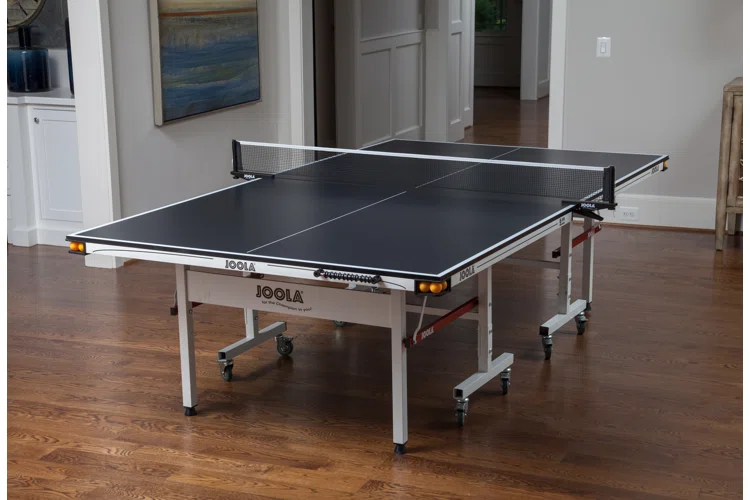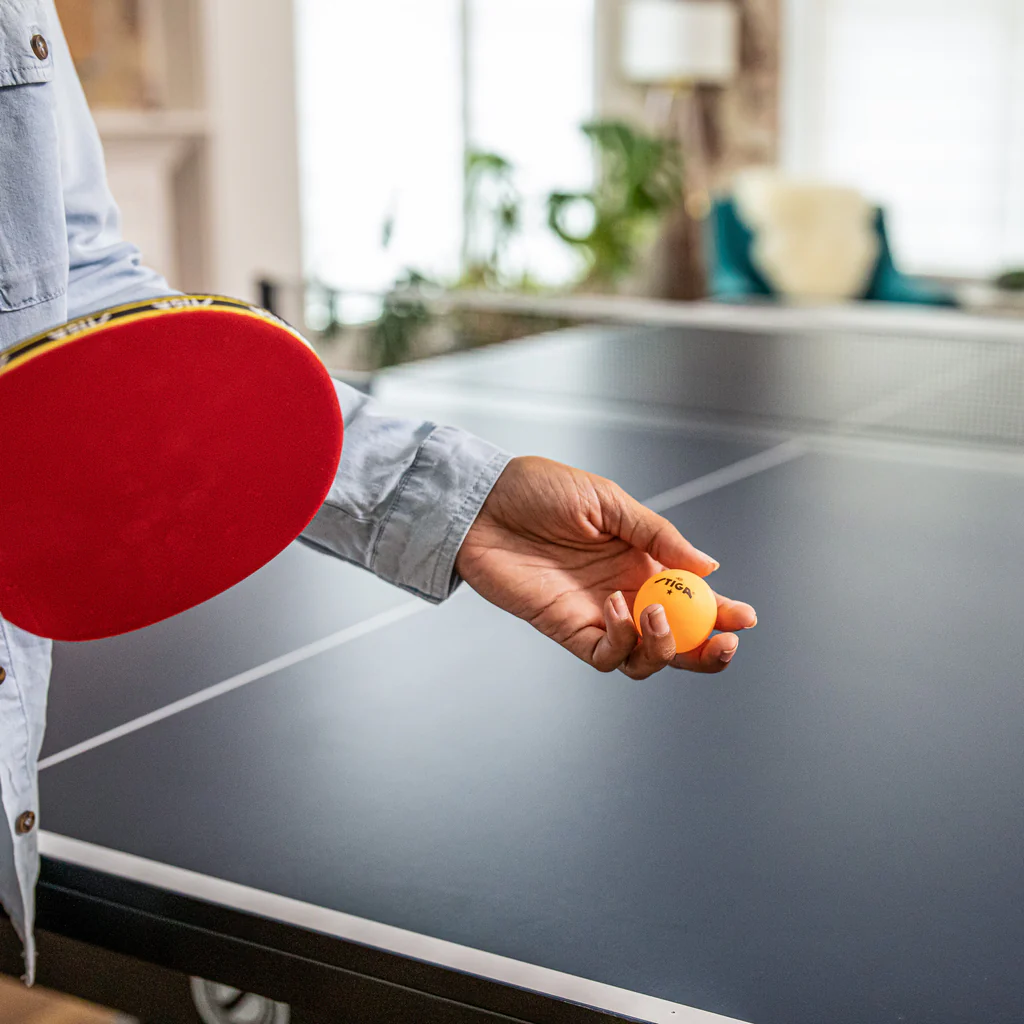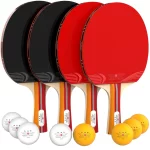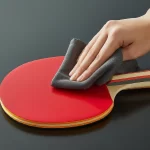Ping pong, also known as table tennis, is a deceptively simple game with surprising depth. While the basic concept of hitting a ball back and forth across a net might seem straightforward, mastering the sport requires a combination of skill, strategy, and the right equipment. And at the heart of your table tennis arsenal lies your trusty paddle. But with a variety of sizes and styles available, choosing the perfect ping pong paddle can feel overwhelming.
This is where understanding ping pong paddle dimensions comes in. While seemingly technical, these measurements play a crucial role in how the paddle feels in your hand, the control you have over shots, and ultimately, your playing style. So, before you dive into the exciting world of table tennis, let’s delve into the fascinating world of ping pong paddle dimensions and how they can impact your game.
The Breakdown: Key Paddle Measurements
A typical ping pong paddle consists of two main parts: the blade and the handle. The blade is the flat surface that makes contact with the ball, and the handle provides you with a grip. Let’s break down the key measurements of each:

-
Blade Dimensions:
- Length: The official regulations set by the International Table Tennis Federation (ITTF) dictate a maximum blade length of 17.5 centimeters (cm) – roughly 6.9 inches. However, most paddles on the market fall within a range of 16.5 cm to 17 cm (6.5 to 6.7 inches). This size offers a good balance between maneuverability and power.
- Width: Similarly, the ITTF regulations specify a maximum width of 15 cm (5.9 inches). Paddles typically range from 15 cm to 15.5 cm (5.9 to 6.1 inches) in width. This measurement allows for a good hitting zone while maintaining control.
-
Handle Dimensions:
-
Length: Handle length can vary more significantly than blade dimensions. Paddles typically come in two main handle styles: flared and anatomically shaped (often called anatomic). Flared handles offer a more traditional, wider grip at the bottom, typically measuring around 10 cm to 12 cm (4 to 4.7 inches) in length. Anatomic handles are designed to conform to the natural curve of your hand, often measuring slightly shorter at 8 cm to 10 cm (3.1 to 4 inches).
-
Thickness: Handle thickness is another factor to consider. Thicker handles, typically around 2.5 cm to 3 cm (1 to 1.2 inches) in width, provide a more secure grip for players with larger hands. Conversely, thinner handles, measuring around 1.5 cm to 2 cm (0.6 to 0.8 inches), offer greater maneuverability for players who prefer a lighter feel.
-

Beyond the Basics: Additional Considerations
While these core measurements provide a good starting point, there’s more to consider than just the raw numbers. Here are some additional factors that can influence how a paddle feels and plays:
-
Blade Thickness: Blades can range from 5 mm to 8 mm (0.2 to 0.3 inches) in thickness. Thinner blades offer more control for precise shots, while thicker blades provide greater power for offensive play.
-
Weight: The weight of a paddle is a combination of the blade, handle, and rubber. Lighter paddles, typically weighing around 150 grams (5.3 ounces), prioritize speed and maneuverability. Heavier paddles, around 180 grams (6.3 ounces) or more, offer more power but might feel less agile.
-
Material: Paddles are typically made of wood, although composite materials are becoming increasingly popular. Wood offers a classic feel and good value, while composite materials can provide more consistent performance and durability.

Matching Paddle Dimensions to Your Playing Style
Now that you have a better understanding of ping pong paddle dimensions, let’s explore how these measurements can influence your playing style:
-
Attacking Players: If you favor an aggressive, offensive game, you might prefer a slightly thicker blade (around 7 mm) for increased power. A flared handle can also provide a more secure grip for powerful strokes.
-
Defensive Players: Defensive players who prioritize control and precision might opt for a thinner blade (around 5 mm) and a lighter paddle overall. Anatomic handles can offer a more comfortable grip for quick blocks and counter-attacks.
-
All-Round Players: If you enjoy a balanced game with both offensive and defensive elements, a mid-range blade thickness (around 6 mm) and a medium-weight paddle can be a good choice. Flared or anatomic handles can both work well for this style.
Remember: These are just general guidelines. Ultimately, the best way to find your perfect paddle is to experiment with different dimensions and styles to see what feels most comfortable and suits your playing style. Here are some additional tips to help you on your journey:
-
Try Before You Buy: If possible, visit a local table tennis store and try out paddles with different dimensions. See how they feel in your hand and how they respond to your strokes.
-
Consider Your Experience Level: Beginner players might prioritize lighter paddles with thinner blades for better control. As your skills progress, you can explore paddles with more weight and thickness for increased power.
-
Don’t Neglect Rubber: The rubber on your paddle significantly impacts how the ball plays. Beginners might benefit from all-round rubbers that offer a balance of spin and speed. More advanced players can choose rubbers that emphasize specific aspects of their game, such as offensive spin or defensive control.

Beyond Dimensions: Taking Care of Your Paddle
Once you’ve found your perfect paddle, proper care will ensure it lasts for years to come. Here are some simple tips:
-
Store Your Paddle Properly: Keep your paddle in a cool, dry place when not in use. Avoid extreme temperatures and direct sunlight, which can warp the blade or damage the rubber.
-
Protect the Rubber: The rubber on your paddle is delicate. Avoid hitting the edges of the table with the rubber and clean it regularly with a damp cloth to remove sweat and dirt.
-
Replace Worn-Out Rubber: Over time, the rubber on your paddle will wear down and lose its effectiveness. It’s generally recommended to replace the rubber every few months to maintain optimal performance.

Conclusion: The Perfect Match Awaits
By understanding ping pong paddle dimensions and how they relate to playing style, you’re well on your way to finding the perfect equipment to elevate your game. Remember, there’s no single “correct” paddle; the ideal choice is the one that feels most comfortable and allows you to execute your shots with confidence. So, grab a paddle, hit the table, and have fun exploring the exciting world of table tennis!


